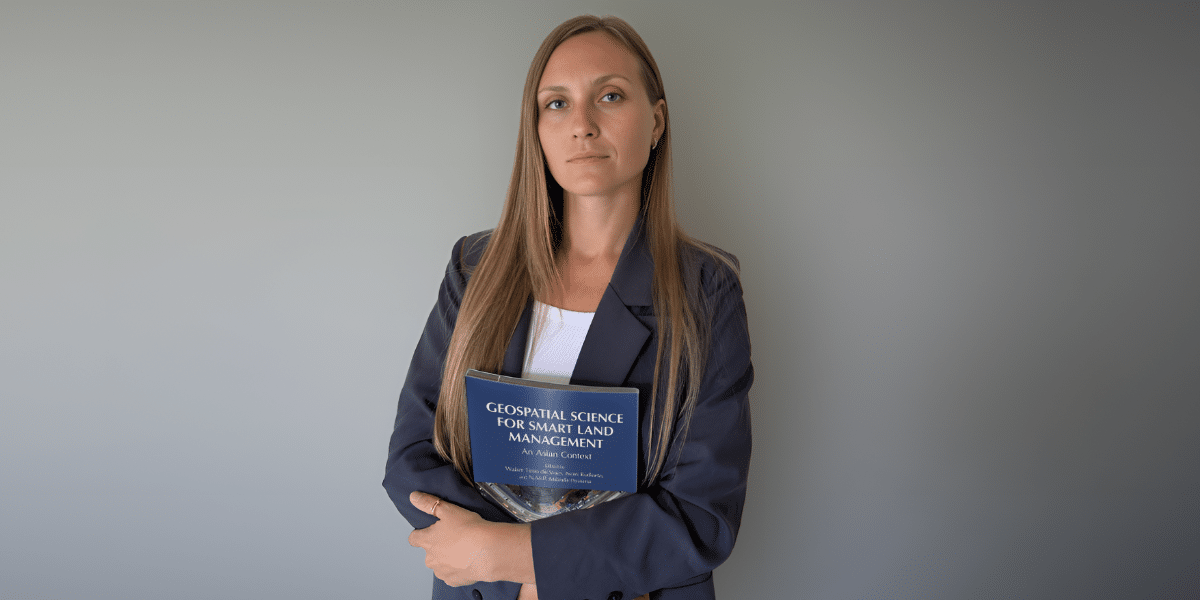By: Alexander Zimin
In today’s world, where globalization and digitalization have become the norm, standardizing processes and data plays a crucial role in effectively managing land resources. One of the most significant international standards in this area is the Land Administration Domain Model (LADM). This interview with Valeria Khodeneva, a cadastral engineer, discusses the importance of implementing LADM and its impact on the land administration system.
Valeria, please explain what LADM is and why this standard is essential for land administration.
Valeria: The Land Administration Domain Model (LADM) is an international standard developed by the International Federation of Surveyors (FIG) and the United Nations Human Settlements Programme (UN-Habitat). It defines general principles and models for describing land rights, land management, and property registration. LADM provides a framework for data standardization, which helps ensure compatibility between different countries and regions. This standardization is crucial as it allows for integrating various land administration systems, ensuring that data is consistent, reliable, and easily exchangeable.
What are the main advantages of using LADM?
Valeria: The advantages of standardization, such as LADM, are multifaceted. First, data compatibility allows different countries and organizations to exchange information effectively. This is particularly important for international projects and initiatives, where seamless data integration can lead to better cooperation and efficiency. Second, standardized models simplify the understanding of data and land administration processes for all stakeholders, which promotes transparency and trust. Having a common language and framework makes it easier to train personnel, implement new systems, and maintain consistency across various jurisdictions. Finally, using common structures can significantly reduce the time and costs of developing and implementing land management systems. This is because standardized approaches eliminate the need for custom solutions, enabling faster deployment and more straightforward maintenance.
What challenges do you face when implementing LADM in everyday work?
Valeria: One of the main challenges is the need for coordination among various stakeholders. This requires significant effort in training personnel and updating existing systems. Ensuring that all involved parties understand and adhere to the new standards can be daunting, especially when dealing with legacy systems and traditional practices. Additionally, introducing new standards may face resistance from those accustomed to traditional methods. Change can be difficult, and a learning curve is often associated with adopting new technologies and practices. However, despite these challenges, we see great potential in using LADM. Overcoming these obstacles involves continuous education, clear communication of the benefits, and demonstrating how the new standards improve overall efficiency and accuracy.
Can you provide examples of successful LADM implementation?
Valeria: Certainly, some countries, such as the Netherlands and Sweden, have successfully implemented LADM and actively use it in their land management systems. These countries have demonstrated that using international standards can significantly improve the quality and efficiency of cadastral systems and simplify the processes of property registration and management. In the Netherlands, for instance, the integration of LADM has led to more accurate land records, streamlined operations, and reduced administrative burdens. Sweden has seen similar benefits, with enhanced data interoperability and improved public trust in land administration processes. These examples highlight the tangible benefits of adopting LADM, serving as models for other countries looking to modernize their land administration systems.
What are the main steps for successfully implementing LADM?
Valeria: First and foremost, it is necessary to ensure the training and upskilling of specialists working in land administration. This includes both technical training and understanding the principles and benefits of standardization. Training programs should be comprehensive, covering everything from basic concepts to advanced applications of LADM. Ensuring coordination among all stakeholders and developing standards and data exchange protocols is also important. Clear guidelines and protocols are essential to ensure everyone is on the same page and that data can be exchanged seamlessly. Finally, existing systems need to be updated and integrated with new standards. This may involve significant investments in technology and infrastructure, but the long-term benefits far outweigh the initial costs.
How does the use of LADM affect clients and stakeholders?
Valeria: The use of LADM increases the transparency and accessibility of data for clients and other stakeholders. This improves trust and confidence in land management processes. Clients receive more accurate and up-to-date data, which helps them make informed decisions. For example, property buyers can be assured that the land records they are reviewing are accurate and reflect the property’s current status. Additionally, the process of interacting with government agencies is simplified, reducing bureaucratic barriers. This ease of access and clarity of information leads to a more efficient and user-friendly experience for all involved parties.
What prospects do you see for the further development of LADM and its impact on land administration?
Valeria: I see great potential in the further development of LADM. Integrating new technologies, such as artificial intelligence and blockchain, can significantly enhance our data analysis and record security capabilities. Artificial intelligence can be used to analyze large datasets, identify patterns, and predict trends, which can be invaluable for planning and decision-making in land administration. Blockchain technology offers a way to secure land records, ensuring they are tamper-proof and verifiable. These technologies will help make land management processes even more efficient and transparent. Additionally, advancements in geospatial technology and data analytics will continue to evolve, providing new tools and methodologies for land administration.
What advice would you give to colleagues just starting to implement LADM?
Valeria: My advice is to embrace change and stay curious. The field of land administration is rapidly evolving, and to stay ahead, you need to be willing to learn and adapt. Continuous education and professional development are crucial. Collaboration and continuous improvement are key to successfully implementing new standards. Engaging with other professionals, sharing experiences, and learning from best practices can help overcome challenges and achieve better outcomes. Remember, transitioning to standardized systems may be challenging initially, but the long-term benefits are well worth the effort.
Summary
Valeria Khodeneva emphasizes the importance of international cooperation and knowledge sharing for the successful implementation of LADM. Standardizing models in land administration using LADM is an important step toward more effective and transparent land resource management. Examples of successful LADM applications show that standardization can significantly improve the quality and speed of cadastral systems and increase trust in land management processes. By adopting LADM, countries can ensure that their land administration systems are prepared to meet future demands, providing a robust foundation for sustainable development and economic growth.
Published by: Martin De Juan

















